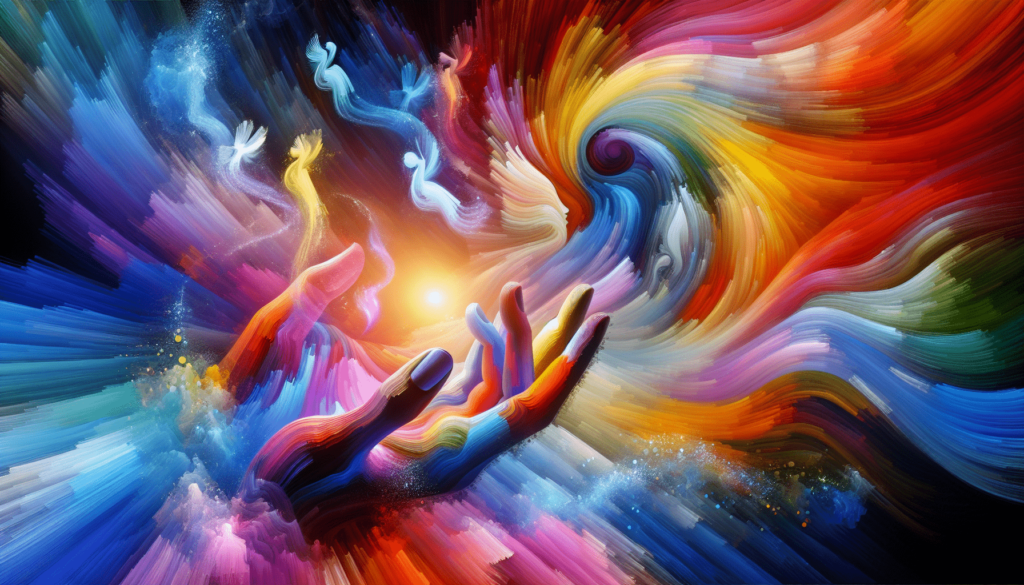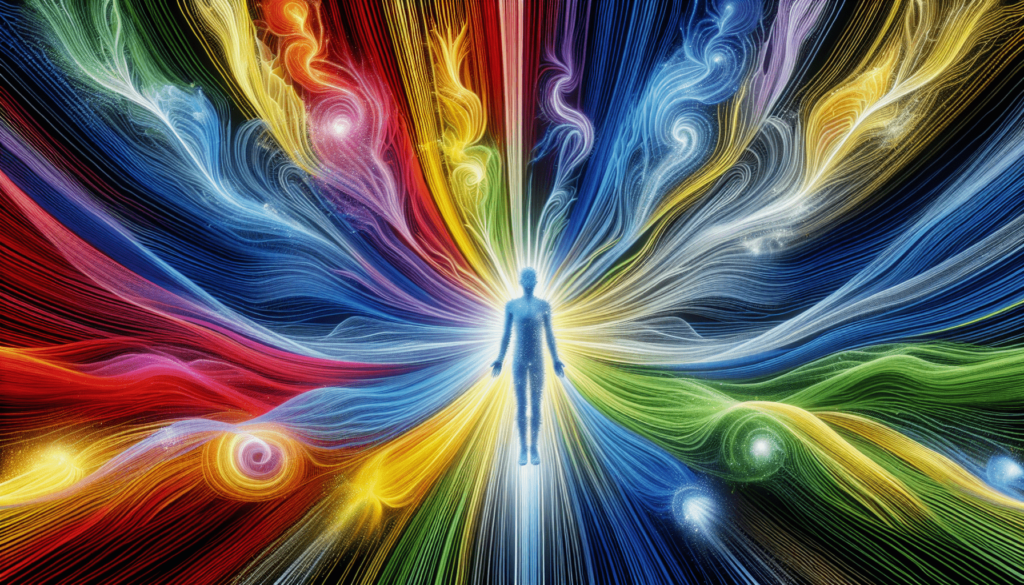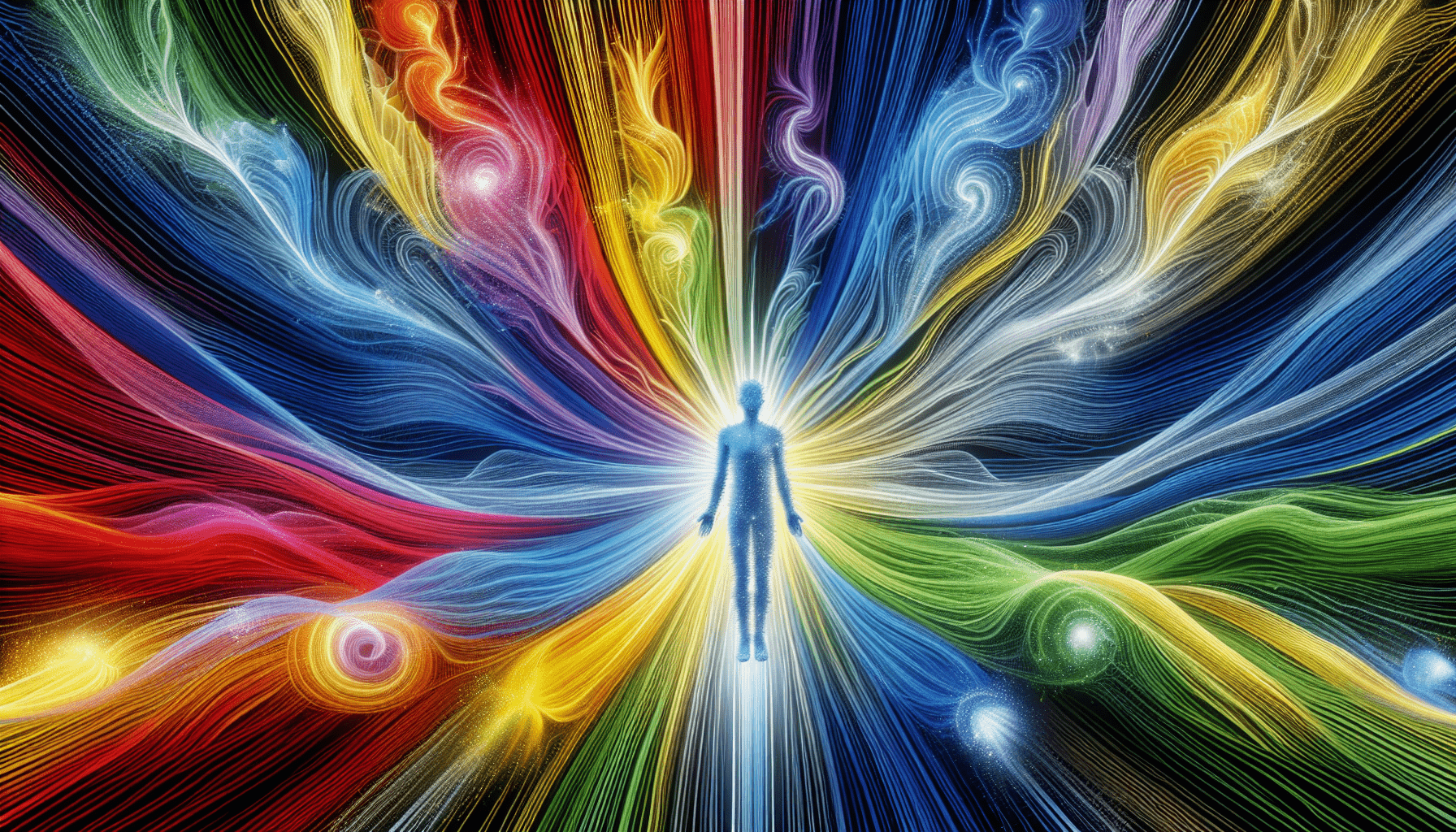In this article, you will discover the fascinating effects of color therapy and how it can positively impact your well-being. By utilizing the power of different colors, this unique form of alternative medicine aims to promote harmony and balance within your body. From calming blues to energizing yellows, each color has the potential to heal and rejuvenate you in ways that you may not have expected. So, get ready to explore the world of color therapy and unlock a whole new spectrum of possibilities for your health and happiness.

What is Color Therapy?
Definition
Color therapy, also known as chromotherapy or color healing, is a holistic healing practice that uses different colors to stimulate specific responses in the mind and body. It is based on the belief that each color possesses its own unique energy and vibration, which can impact our physical, emotional, and mental well-being.
History
The use of colors for healing dates back thousands of years, with ancient civilizations such as the Egyptians, Greeks, and Chinese incorporating color in their healing practices. In Egypt, color was used in conjunction with sunlight to treat various illnesses. Hippocrates, often regarded as the father of modern medicine, believed that colored light could restore balance and harmony to the body.
Principles
Color therapy is grounded in the principles of energy and vibration. It is believed that each color corresponds to different energy centers in the body, known as chakras, and these energy centers can become imbalanced or blocked due to physical or emotional factors. By exposing oneself to specific colors, the energy centers can be stimulated, promoting healing and wellness.
Psychological Effects of Colors
Color Associations
Colors often evoke emotional and psychological responses. For example, red is associated with passion and energy, while blue is often linked to calmness and tranquility. These associations are not universal but can vary based on cultural and personal experiences. Understanding the meanings and associations behind different colors forms the basis of color therapy.
Effects on Mood and Emotions
Colors can have a profound impact on our mood and emotions. Bright and warm colors like yellow and orange are known to uplift spirits and promote feelings of joy and optimism. In contrast, cool colors such as green and blue can have a calming effect and help reduce anxiety and stress. Color therapy utilizes these effects to help individuals achieve a desired emotional state.
Color Preferences
Everyone has their own unique color preferences, which can provide insight into their inner emotions and needs. For example, someone who gravitates towards the color green may be seeking balance and harmony in their life, while someone drawn to purple may be in need of spiritual connection. Color therapy works by identifying these preferences and using them to support emotional well-being.
Physical Effects of Colors
Color and Energy Levels
Colors have the ability to energize or relax the body. Warm colors like red and orange are believed to stimulate and increase energy levels, making them beneficial for individuals experiencing fatigue or low vitality. On the other hand, cool colors such as blue and green have a calming effect, promoting relaxation and stress reduction.
Effects on the Nervous System
Different colors can directly affect our nervous system. Bright and vibrant colors can stimulate the nervous system, increasing alertness and attention. Conversely, soft and muted colors can have a soothing effect, helping to calm an overactive nervous system. By understanding these effects, color therapy can be tailored to support the nervous system’s specific needs.
Color and Perception
Colors can influence our perception of the world around us. They can create optical illusions, alter our sense of depth or space, and affect how we perceive objects and shapes. For instance, warm colors tend to appear closer, while cool colors seem to recede. This knowledge is harnessed in color therapy to promote positive perceptions and enhance overall well-being.
Color and Healing
Color has long been recognized for its potential to promote healing. Red, for instance, is associated with increased circulation and vitality, making it suitable for individuals with blood-related conditions. Blue, with its cooling and calming properties, may benefit those with inflammatory conditions or high blood pressure. Color therapy leverages these healing properties to support physical health.
Color Therapy Techniques
Color Visualization
Color visualization involves imagining specific colors in our mind’s eye. By visualizing a particular color, we can tap into its associated energy and benefits. This technique can be practiced during meditation, relaxation exercises, or simply as a means to alleviate stress and promote healing.
Color Breathing
Color breathing involves focusing on the breath while visualizing a particular color entering the body with each inhalation. The color is believed to infuse the body’s cells with its energy, providing therapeutic benefits. Color breathing can help cleanse and balance the energy centers and promote physical and emotional healing.
Color Meditation
Color meditation involves focusing on a specific color while clearing the mind and achieving a state of deep relaxation. This practice can help individuals connect with the energy of the chosen color, promoting overall well-being, and balance. It is a powerful tool for reducing stress, anxiety, and promoting mental clarity.
Color Bathing
Color bathing involves immersing oneself in a pool of colored water, either natural or artificial, for a specified period. As the body absorbs the color energy, it is believed to balance the energy centers and promote healing. Color bathing is a popular therapeutic technique used to address various physical and emotional ailments.
Color Clothing
Wearing clothes in specific colors can have a profound impact on our mood and energy levels. Color therapists often recommend wearing certain colors to support particular emotional or physical needs. For example, someone feeling low in energy may be advised to wear vibrant colors like red or yellow to boost their vitality.

Application of Color Therapy
Health and Wellness
Color therapy can be applied to various aspects of health and wellness. It is commonly used to alleviate stress and anxiety, boost energy levels, and promote relaxation. Moreover, color therapy can be tailored to address specific health concerns, such as improving digestion, enhancing immunity, or relieving chronic pain.
Mental and Emotional Wellbeing
Colors have a significant impact on our mental and emotional states. Color therapy techniques can be employed to manage and improve emotional well-being, including reducing symptoms of depression, anxiety, and mood disorders. By utilizing specific colors, individuals can create a more positive and balanced emotional state.
Treatment of Medical Conditions
Color therapy can serve as a complementary approach to traditional medical treatments. It has shown promising results in assisting the healing process for a range of medical conditions, such as skin disorders, migraines, sleep disorders, and chronic pain. However, it should always be used in conjunction with professional medical advice and treatment.
Enhancing Productivity and Creativity
Different colors can stimulate specific mental states and enhance cognitive abilities. Incorporating color therapy techniques into the workplace or creative spaces can improve productivity, focus, and creativity. For example, energizing colors like orange and yellow can promote enthusiasm and creativity, while blue and green can help foster a calm and focused mindset.
Improving Sleep Quality
Colors can influence our sleep patterns and quality of rest. Soft and cool colors are generally recommended for promoting relaxation and supporting a good night’s sleep. Blue, in particular, has been found to decrease heart rate and promote a sense of calmness, making it an ideal color for the bedroom. Color therapy techniques can be utilized to create the optimal sleep environment.
Color Therapy in Everyday Life
Choosing Colors for Home Decor
Color therapy principles can be applied when selecting colors for home decor. Each room’s purpose and desired mood can be enhanced by choosing appropriate colors. For example, warm and vibrant colors like red or orange can create a lively and energetic atmosphere in social spaces, while cool and soothing colors like blue or green can promote relaxation and calmness in bedrooms or meditation areas.
Using Color in Clothing and Accessories
The colors we wear can influence our energy levels and mood throughout the day. Color therapy suggests wearing specific colors to support emotional and physical needs. For instance, yellow or orange clothing can boost optimism and motivation, while blue or green clothing can enhance a sense of calmness and tranquility.
Color and Personal Branding
Color therapy’s principles can be applied to personal branding and self-expression. Different colors evoke different emotions and traits in others, and understanding these associations can help individuals create a desired impression. For example, a brand focusing on health and wellness might incorporate green or blue colors to create a sense of trust and serenity.
Color in Art and Design
Artists and designers can harness the power of colors to create specific moods and evoke emotional responses in their work. Color therapy principles can serve as a valuable tool in determining color palettes and compositions. By selecting the appropriate colors, artists and designers can deepen the impact of their creations and engage viewers on a more profound level.
Criticism and Controversies
Lack of Scientific Evidence
Despite its long history and positive anecdotal experiences, color therapy still lacks extensive scientific evidence. The subjective nature of color perception and the difficulty in conducting controlled studies present challenges in establishing clear cause-and-effect relationships. While individual experiences may be beneficial, more rigorous research is needed to validate color therapy’s efficacy.
Placebo Effect
The placebo effect, which involves the belief in a treatment’s effectiveness leading to perceived benefits, may play a role in color therapy’s reported positive outcomes. The power of suggestion and belief in healing can result in improved well-being, even without a direct physiological effect. Recognizing the potential influence of the placebo effect is crucial when evaluating the effectiveness of color therapy.
Skepticism in the Medical Community
Color therapy has faced skepticism within the medical community due to the lack of scientific evidence supporting its claims. Many practitioners and healthcare professionals remain cautious about incorporating color therapy as a primary treatment method. However, it is important to note that color therapy can complement conventional medicine and be used as a supportive practice.
Finding a Color Therapist
Qualifications and Training
When seeking a color therapist, it is essential to consider their qualifications and training. Look for practitioners who have received formal education in color therapy or related fields, such as holistic healing or psychology. Certification from reputable organizations or completion of recognized training programs indicates a practitioner’s commitment to professionalism and demonstrates their expertise.
Evaluating Therapists
When evaluating color therapists, consider their experience and specialization. Some therapists may have expertise in specific areas, such as emotional healing or physical ailments. It is also beneficial to speak with previous clients or seek recommendations to gain insight into the therapist’s effectiveness and approach.
Finding Reliable Practitioners
To find reliable color therapists, consult professional organizations or directories specializing in holistic healing or alternative therapies. These resources often provide listings of qualified practitioners, making it easier to find reputable and reliable color therapists. Additionally, consider attending workshops or seminars to connect with experts in the field and gain a deeper understanding of color therapy.
Case Studies and Success Stories
Individuals’ Experiences with Color Therapy
Numerous individuals have reported positive experiences with color therapy for various ailments and personal growth. Stories range from improved mental well-being to physical healing, highlighting the potential benefits of color therapy in different contexts. These anecdotal accounts can be insightful and encouraging for those considering color therapy as a complementary approach to their well-being.
Organizations Implementing Color Therapy
Certain organizations, such as hospitals, wellness centers, and spas, have incorporated color therapy into their treatment offerings. They recognize the potential benefits of color therapy in promoting healing and well-being. These organizations often partner with experienced color therapists to provide specialized services and enhance the overall care provided.
Scientific Research Supporting Color Therapy
While scientific research on color therapy is limited, there have been studies that suggest its potential benefits. For example, research has shown that exposure to specific colors can impact heart rate, blood pressure, and mood. Further scientific investigation is needed to establish a more comprehensive understanding of color therapy’s effects and mechanisms.
Future Directions in Color Therapy
Advancements in Technology and Research
As technology continues to advance, new tools and equipment may be developed to enhance color therapy. Innovative devices could provide more precise color wavelengths and intensities, allowing for targeted and customized treatments. Additionally, further research is needed to explore the biological mechanisms underlying color therapy and how it can be integrated into evidence-based healthcare practices.
Integration with Other Therapeutic Methods
Color therapy has the potential to be integrated with other therapeutic methods to enhance overall well-being. It can complement practices such as acupuncture, massage therapy, or psychotherapy to provide a holistic approach to healing. Collaborative efforts among different therapeutic disciplines may lead to more comprehensive and effective treatment strategies.
In conclusion, color therapy is a holistic healing practice that utilizes the power of colors to promote physical, emotional, and mental well-being. While the scientific evidence supporting color therapy is limited, anecdotal experiences and historic use suggest its potential benefits. With further research and advancements, color therapy may find a more prominent place within conventional healthcare practices, offering individuals a complementary approach to support their overall well-being.

